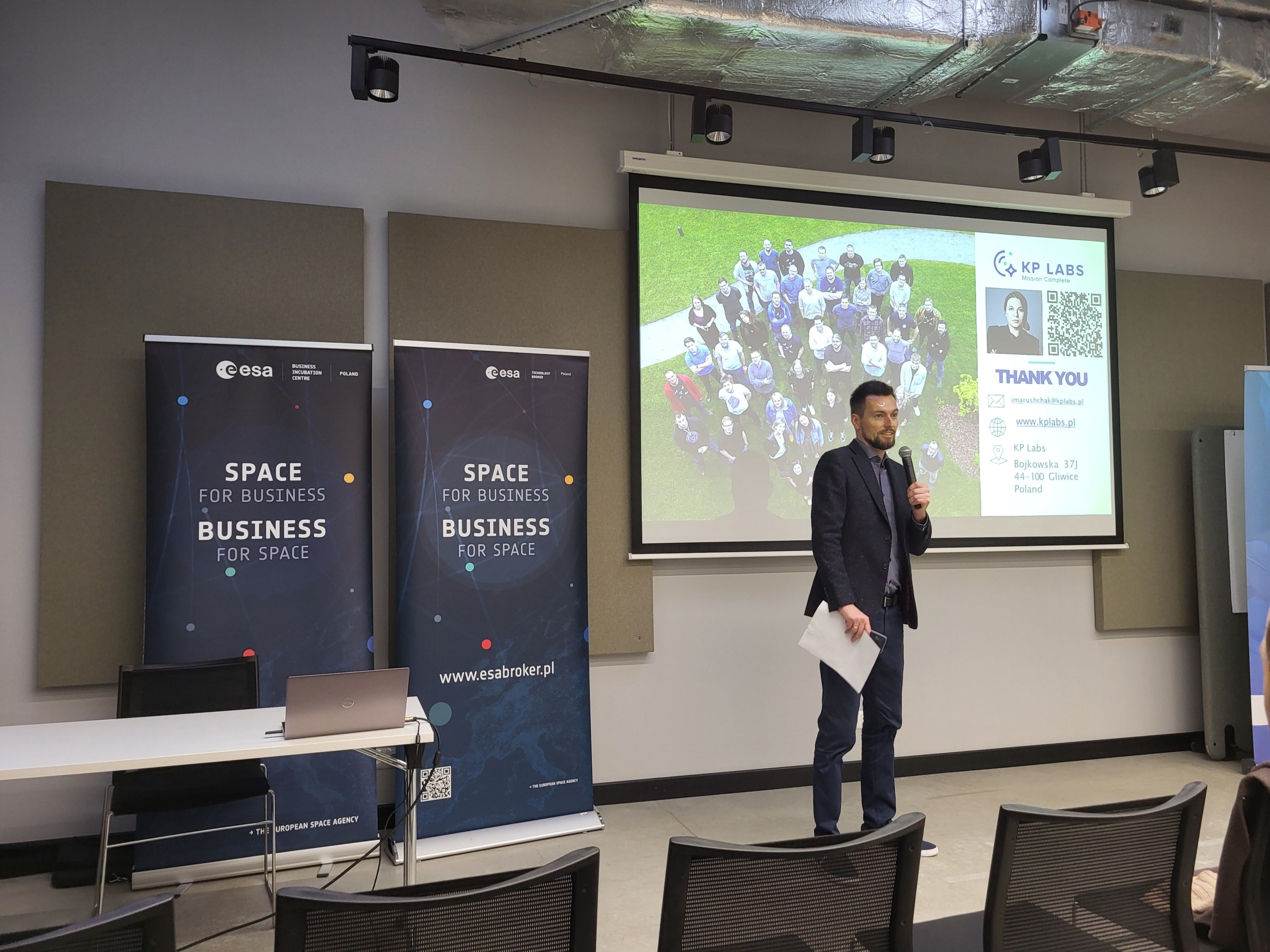
Space.Connect 2024 was not just an industry event but, above all, a platform connecting cutting-edge space technologies with businesses from various economic sectors. The conference’s central theme focused on demonstrating the potential of transferring space technologies to everyday applications, enabling companies to gain a competitive edge and develop their products and services. Participants had the opportunity to learn how to adapt innovative space solutions in their organizations, establish valuable business connections, and explore financing options for technological projects.
During the conference’s opening, Paweł Kwiatkowski from ABGi Poland, serving as the ESA Technology Broker, welcomed the attendees and introduced the event’s concept. Jeremiasz Merkel from the Polish Space Agency (POLSA) followed with a presentation on how POLSA supports the development of the space sector and innovation in Poland. This set the stage for the event’s rich program, which included expert presentations, discussion panels, and matchmaking sessions.
In the morning session, Jarek Chojnacki, ESA Technology Broker, discussed how companies could gain a technological advantage through space technology transfer. Presentations of innovative projects under the ESA Spark Funding program garnered particular attention. These included solutions like the PLUTONIC Dosimeter by Blue Dot Solutions, the RB Quantum Perimeter 360 project by RB Defence, and MIRORES Mining Data Services’ far-infrared spectrometers. Each project showcased how space technologies could find practical applications on Earth.
One of the event’s highlights was the panel discussion titled „Why Are More Funds Interested in Space Sector Projects, and Who Benefits from This?” Panelists included Vanda Alwast (née Gaidamovič) from Iron Wolf Capital and Andrzej Rościszewski from Expeditions Fund, moderated by Paweł Ziemnicki, Head of the Office of the Polish Space Industry Association. The discussion focused on why venture capital funds are increasingly recognizing the potential of the space sector and how investors can support groundbreaking technological projects.
Edyta Musielak from ABGi Poland presented „Funding Innovations Through EU and National Support Programs,” discussing various funding opportunities available at both national and European levels.
The conference also featured speakers from leading Polish technology companies. Oskar Zdunek from Scanway Space, Julia Marushchak from KP Labs, and Marta Markiewicz from Thorium Space Technology shared their experiences and successes in transferring space technologies to the civilian sector. These presentations inspired participants to seek innovative solutions in their industries.
A thematic session on the role of Technology Transfer Centers in developing innovative solutions for the space sector emphasized their crucial role.
Paweł Płatek from the University of Warsaw Technology Transfer Center discussed the processes of transforming scientific research into practical applications. Bogusława Gradzik from the Military University of Technology’s Technology Transfer Center presented the institution’s efforts in the space technology domain and its infrastructural potential. Justyna Topolska from the AGH University of Science and Technology’s Technology Transfer and Cooperation Center highlighted the importance of collaboration and active support for innovators.
The session demonstrated the pivotal role Technology Transfer Centers play in bridging science and industry in the space sector.
One of the most intriguing topics was the potential of 3D printing in the space sector. Paweł Robak from OMNI3D Industrial 3D Printing, Antoni Kurzeja from 4Dfusion, and Jakub Stojek from Orbital Matter presented how modern additive manufacturing technologies could support space innovation, from constructing satellite modules to more complex structures. These presentations highlighted the immense potential of these technologies in space and on Earth.
The conference concluded with presentations from ESA BIC Poland and ESA BAAS, showcasing inspiring solutions and opportunities in the space sector. Michał Chwieduk (ESA BIC Poland, ARP) discussed „ESA BIC Poland – Incubation: How to Tackle the Space Sector,” emphasizing the role of incubation in developing innovative space projects. Jan Brzyk from Clever Hive and Łucja Rugor from Kosmok shared their startup experiences. Wojciech Adamiak, PhD (ABGi Poland, ESA Ambassador), closed the conference with „ESA BASS Program – How to Finance Your Space-Based Solution,” encouraging the use of available funds for developing space-based innovations.
Following the presentations and panels, participants enjoyed networking opportunities during a lunch session and an afternoon matchmaking event. These provided excellent opportunities to establish new contacts and exchange ideas. Matchmaking, which had been a success during the first Space.Connect edition, once again proved to be effective, helping participants forge valuable relationships.
Space.Connect 2024 concluded with a summary of the day and announcements of future initiatives supporting the development of Poland’s space sector. The event gathered experts, industry leaders, investors, startups, and representatives from various economic sectors exploring new opportunities through space technologies. It was a place where visions of the future became tangible, and space innovations found their way into everyday life.
Space.Connect 2024 demonstrated that space technologies have enormous transformative potential for various economic sectors. Collaboration between businesses, science, and public institutions is key to harnessing this potential. Thanks to events like this, the Polish space sector has a chance to become a leader in innovation on a European and global scale.



